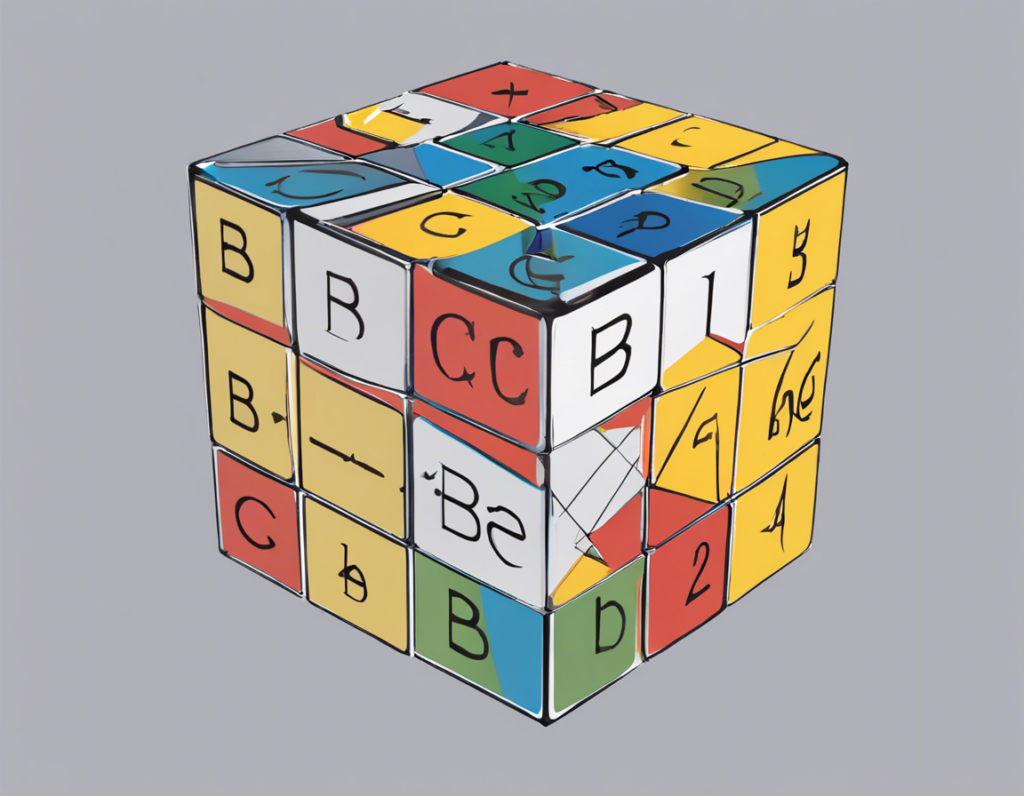Have you ever looked at a cube and wondered about its dimensions and properties? Cubes are fundamental geometric shapes with unique characteristics that set them apart from other three-dimensional objects. Understanding the formula for calculating the various aspects of a cube can provide valuable insights into its structure and volume. In this blog post, we will explore the formula of a cube in detail, from its definition to its applications in the real world.
What is a Cube?
A cube is a three-dimensional shape where all sides are equal in length and all angles are right angles. It is a special case of a rectangular prism with six square faces. The edges of a cube are all the same length, and the cube has a total of twelve edges, eight vertices, and six faces.
Properties of a Cube
- Equal sides: All sides of a cube have the same length.
- Right angles: All angles in a cube are right angles.
- Diagonals: The diagonals of a cube are in the ratio of √3 : 1 with respect to the edge length.
- Volume and Surface Area: The volume and surface area of a cube are calculated using specific formulas.
Formula of a Cube
The main properties we can calculate using the formula of a cube are volume, surface area, and diagonal length. Let’s break down each of these calculations:
Volume of a Cube
The volume of a cube can be calculated using the formula:
Volume = s^3
Where s is the length of one side of the cube.
Surface Area of a Cube
The surface area of a cube can be calculated using the formula:
Surface Area = 6s^2
Where s is the length of one side of the cube.
Diagonal Length of a Cube
The diagonal length of a cube can be calculated using the formula:
Diagonal = s√3
Where s is the length of one side of the cube.
Applications of the Cube Formula
Understanding the formula of a cube has practical applications in various fields, including:
- Architecture: Architects use the concept of cubes to design buildings with symmetrical and proportional dimensions.
- Mathematics: The formula of a cube is essential in geometry and algebra for calculations involving three-dimensional shapes.
- Engineering: Engineers use the properties of cubes in structural design and calculations for stability and load-bearing capacity.
FAQs (Frequently Asked Questions)
- What is the difference between a cube and a cuboid?
-
A cube has all sides equal in length and all angles as right angles, whereas a cuboid has rectangular faces with unequal side lengths.
-
Can a cube have a diagonal on the faces?
-
No, a cube’s diagonal exists through the body diagonal connecting opposite corners.
-
How do you find the length of the edge of a cube given its volume?
-
To find the length of the edge of a cube given its volume, you would take the cube root of the volume.
-
What is the relationship between the surface area and volume of a cube?
-
The surface area of a cube is directly proportional to the square of its edge length, while the volume is directly proportional to the cube of its edge length.
-
Are Rubik’s Cubes perfect cubes?
- Yes, Rubik’s Cubes are perfect cubes as they have equal sides and right angles on all sides.
Conclusion
In conclusion, the formula of a cube provides invaluable insights into the dimensions and properties of this unique three-dimensional shape. Understanding how to calculate the volume, surface area, and diagonal length of a cube is essential for various applications in mathematics, engineering, and architecture. By mastering the formula of a cube, you can enhance your understanding of geometric shapes and their real-world significance.
